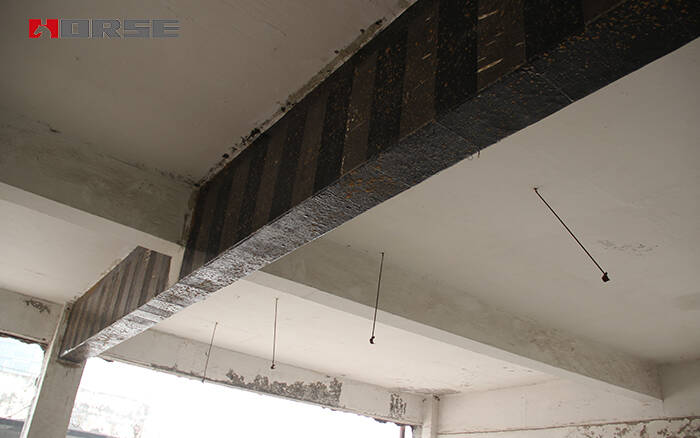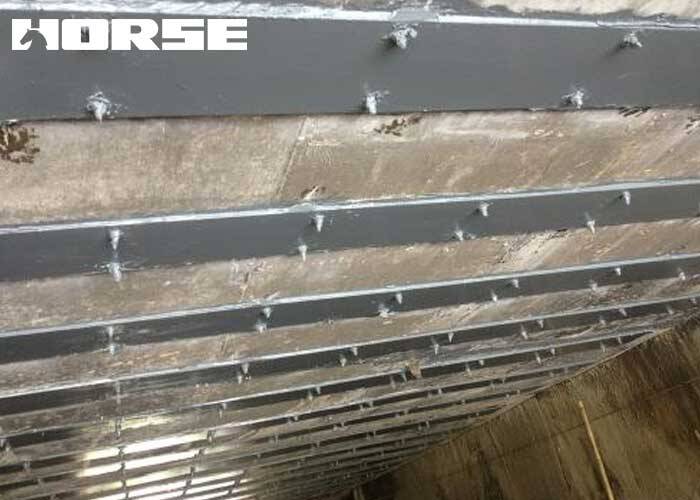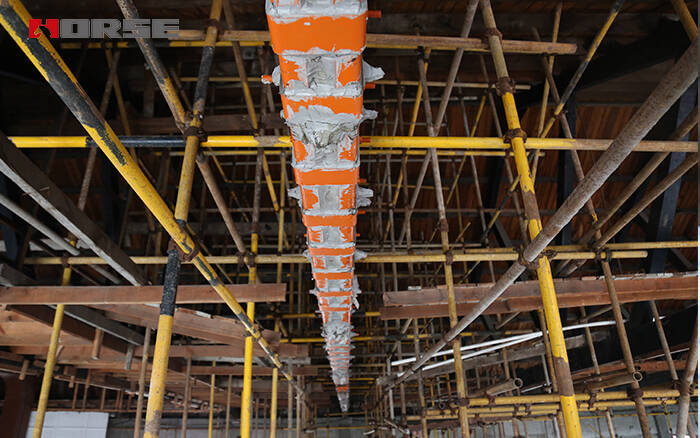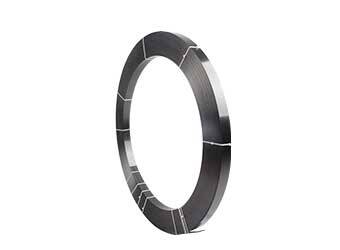Solutions
Horse Construction offers full range of structural strengthening materials with technical supports, documentation supports, products supports, project supports.
Structural Reinforcement, Beam Reinforcement Analysis
For bending, axial compression, and tension reinforcement, externally bonded carbon wrap, steel plate or externally bonded steel are generally used for reinforcement, and shear reinforcement or anchoring reinforcement is generally reinforced by externally bonded U-shaped carbon wrap or U-shaped steel plate.

Reinforced with carbon wrap
Design and construction requirements
a. The concrete strength grade of the component should not be lower than C15, and the positive tensile bond strength with the concrete surface should not be lower than 1.5MPa
b. The increase in the bending bearing capacity of the normal section should not exceed 40% to avoid shear failure before bending failure.
c. Reinforcement of fiber composite material: the preformed board should not exceed 2 layers; the fiber wrap should not exceed 4 layers.
d. Not suitable for the reinforcement of plain concrete members.
Detailed analysis
a. The problem of sticking and extending the length. For the bending reinforcement of the beam bottom, when the extension length of the carbon wrap paste is not sufficient, additional anchoring forms can be adopted, such as the end strengthening U-shaped hoop. For the beam support under bending and reinforcement, when the extension length of the paste is not satisfied, the end anchor can be carried out in the form of steel strip + shot nail.
b. The problem of the encounter between sticky carbon wrap and sticky steel plate. The beam support is reinforced by bending. If the steel plate is used for reinforcement in the other direction, the carbon wrap should be placed on the bottom and the steel plate on the top.
c. Fire prevention issues. Because it is reinforced by sticking carbon wrap, its materials include adhesive and carbon wrap. Among them, the use environment temperature of the binder should not be higher than 60℃, so when using this method to strengthen the concrete structure in a high temperature environment, corresponding protective measures should be taken. The usual practice is to use cement mortar to wipe the surface or apply fireproof paint.

Paste U-shaped hoop carbon wrap
Design and construction requirements
a. The concrete strength grade of the component should not be lower than C15.
b. The width of the anchoring U-shaped hoop: the end hoop is not less than 2/3 of the width of the carbon wrap at the bottom of the beam, and should not be less than 150mm. The middle hoop is not less than 1/2 of the width of the carbon wrap at the bottom of the beam, and should not be less than 100mm. The thickness of the U-shaped hoop should not be less than 1/2 of the thickness of the flexurally reinforced carbon fiber sheet.
c. Shear-resistant reinforcement U-shaped hoop: The upper end of the U-shaped hoop should be anchored with longitudinal beading. When the beam height h is not less than 600mm, a longitudinal waist bead should be added at the waist of the beam.
d. For beams, no less than three U-shaped hoop anchors should be evenly arranged within the extension length, one of which should be set at the end of the extension length.

Paste steel plate reinforcement
Design and construction requirements
a. It is not suitable for plain concrete, including reinforcement of members whose longitudinal reinforcement is less than 0.2% on one side.
b. The increase in the bending bearing capacity of the normal section should not exceed 40% to avoid shear failure before bending failure.
c. Adhesive steel reinforcement steel plate should not be larger than 100mm. The thickness of the hand-applied glue layer is not more than 5mm, and the thickness of the mechanical pressure glue layer is not more than 10mm.
d. The reinforcement of the steel plate should not exceed 3 layers and 2 layers in the tension zone and the compression zone, and the total thickness of the steel plate should not exceed 10mm.
e. Measures should be taken to remove or remove most of the live loads on the structure.
Detailed analysis
a. When the area of the bottom surface of the beam is insufficient, the steel plate can be symmetrically pasted on both sides of the beam, and it should be controlled within 1/4 of the beam height from the tension edge.
b. When the bottom of frame beams and independent beams are reinforced, the tensile steel plate bonding should extend to the support side or column side.
c. When the reinforced bending member has more than one layer of steel plate, the cut positions of the two adjacent layers of steel plates should be staggered by not less than 300mm, and a U-shaped hoop should be added at the cut.

Paste steel U-shaped hoop
Design and construction requirements
a. The U-shaped hoop should be pasted perpendicular to the axis of the component, and should not be pasted obliquely.
b. The width of the U-shaped hoop, the end hoop should not be less than 2/3 of the width of the reinforced steel plate, and should not be less than 80mm; the middle hoop should not be less than 1/2 of the width of the reinforced steel plate, and should not be less than 40mm. The thickness of the U-shaped hoop should not be less than 1/2 of the thickness of the steel plate at the bottom of the beam, and should not be less than 4mm.
c. When the section height h of the beam is greater than or equal to 600mm, it should be considered to add a longitudinal waist steel bead at the waist of the beam.

Outsourcing section steel reinforcement
Design and construction requirements
a. The thickness of the angle steel should not be less than 5mm, and the side length of the angle steel should not be less than 50mm.
b. The cross-sectional area of the patch panel should not be less than 40mmx4mm, and the spacing should not be greater than 20r (r is the minimum radius of gyration of a single angle steel section), and should not be greater than 500mm.
Section analysis
a. Because this reinforcement method requires all flat steel hoops to pass through the original floor slab, this method will damage the original floor slab too much, so this reinforcement method is generally not recommended. If this method is really needed, steel bars can be used instead of flat steel hoops to reduce damage to the original floor slab.
b. The glue injection of the externally bonded section steel should be carried out after the section steel frame is welded. The thickness of the glue seam is between 3mm-5mm; local glue seams with a length of no more than 300mm and a thickness of no more than 8mm are allowed. Note: It cannot appear within the range of 600mm at the end of the angle steel.
You can find anything here you are in need of, have a trust trying on these products, you will find the big difference after that.

High strength, unidirectional carbon fiber wrap pre-saturated to form a carbon fiber reinforced polymer (CFRP) wrap used to strengthen structural concrete elements.

High strength carbon fiber reinforced polymer(CFRP) plate for structural strengthening and concrete repair

HM-CFN is net alike strengthening fabric which made of carbon fiber tow. As the substitutes of steel mesh, it can be used together with epoxy motar to seal and control the crack, and improve the load capacity of the original structurers